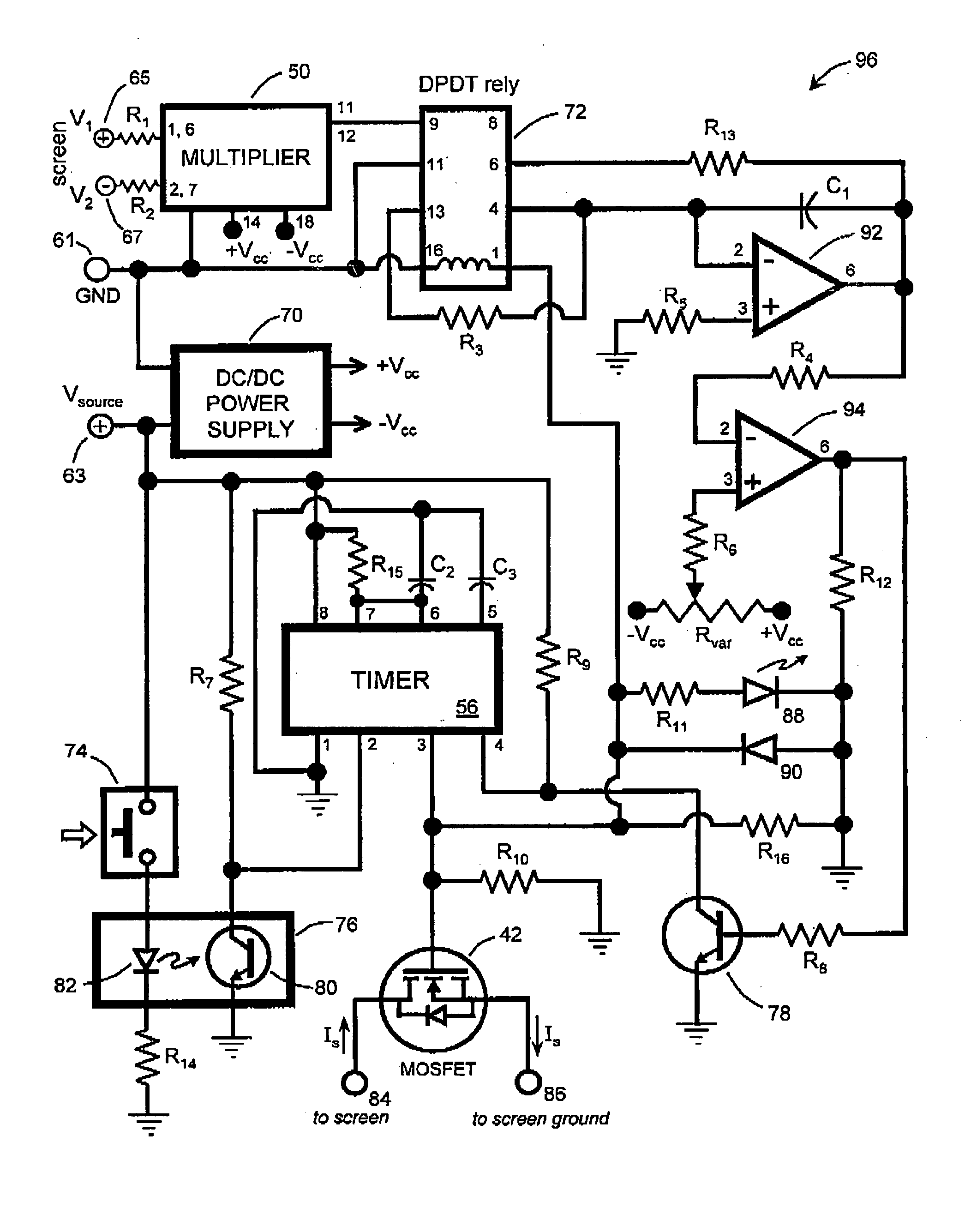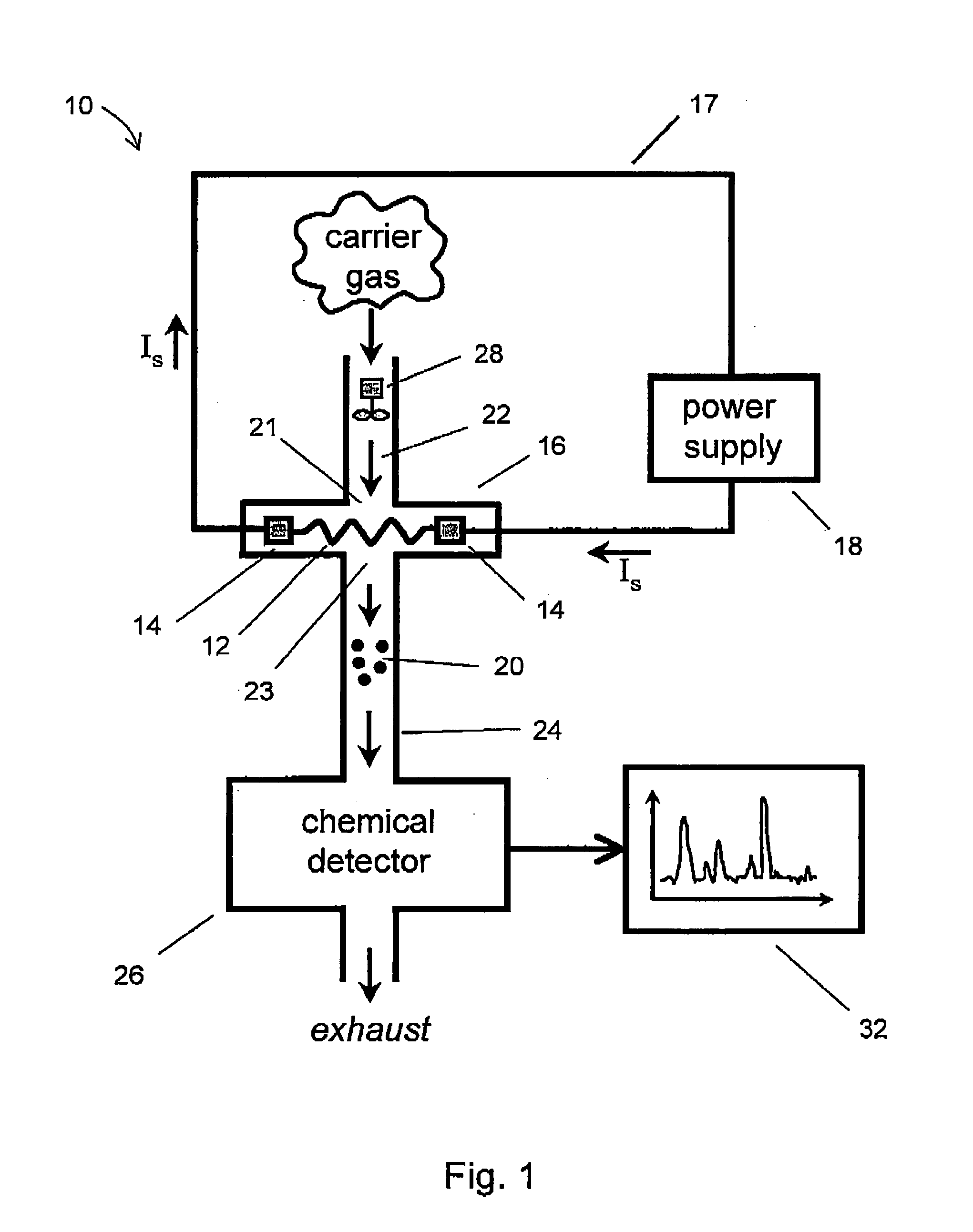Integrating preconcentrator heat controller
a heat controller and preconcentrator technology, applied in the field of chemical detection systems, can solve the problems of large variations in the amount of contaminants desorbed from the screen
- Summary
- Abstract
- Description
- Claims
- Application Information
AI Technical Summary
Benefits of technology
Problems solved by technology
Method used
Image
Examples
Embodiment Construction
[0016]FIG. 1 shows a schematic block diagram of an example of a chemical detection system, according to the present invention. Chemical detection system 10 comprises a porous (i.e., pervious) metallic preconcentrator screen 12 (also referred to as a preconcentrator mesh, substrate, or sample) held in a screen holder 14. Screen holder 14 securely holds screen 12 and makes good electrical contact on opposite edges of screen 12, for driving electrical current, Is, across screen 12 from one edge to the other. Screen holder 14 may comprise a pair of electrically-insulated, opposed panels pivotally connected to each other along one edge by a hinge, with panel latching means for clamping and tightly holding the porous metallic substrate (i.e., screen 12) between the panels, the substrate being electrically insulated from the panels; and a pair of spaced electrical contacts mounted on the panels such that when the substrate is clamped and tightly held by the holder, the contacts touch the s...
PUM
 Login to View More
Login to View More Abstract
Description
Claims
Application Information
 Login to View More
Login to View More - R&D
- Intellectual Property
- Life Sciences
- Materials
- Tech Scout
- Unparalleled Data Quality
- Higher Quality Content
- 60% Fewer Hallucinations
Browse by: Latest US Patents, China's latest patents, Technical Efficacy Thesaurus, Application Domain, Technology Topic, Popular Technical Reports.
© 2025 PatSnap. All rights reserved.Legal|Privacy policy|Modern Slavery Act Transparency Statement|Sitemap|About US| Contact US: help@patsnap.com



